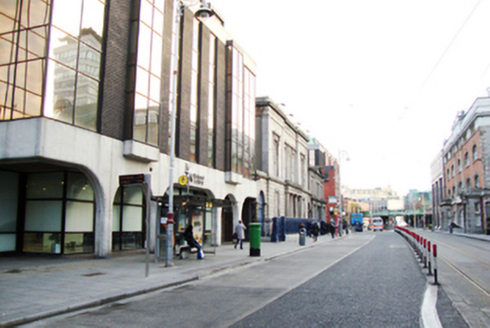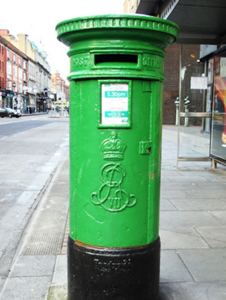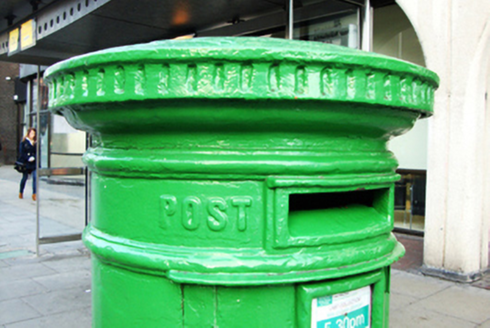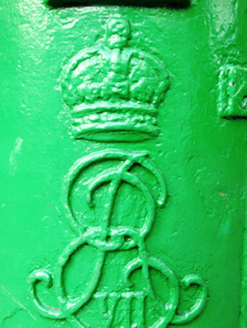Survey Data
Reg No
50010291
Rating
Regional
Categories of Special Interest
Artistic, Historical, Social, Technical
Original Use
Post box
In Use As
Post box
Date
1900 - 1910
Coordinates
316132, 234580
Date Recorded
07/12/2011
Date Updated
--/--/--
Description
Freestanding cast-iron pillar post box installed c.1905. Round plan, with shallow domed cap, moulded corona, neck moulding, cylindrical shaft and moulded plinth base. Raised lettering 'POST OFFICE', to neck flanking letter aperture. Curved hinged door facing east incorporating raised frame and raised royal insignia with crown motif below reading, 'ER VII'. Raised lettering to east side of plinth base, 'Handyside...'. Located at north side of Abbey Street Lower and set within concrete paving and concrete kerbstones.
Appraisal
This well preserved example of an Edwardian postbox is a remnant of the final decades of British rule in Ireland. Still in active use, it is a well-manufactured piece of street furniture that enhances the streetscape. Andrew Handyside and Company iron foundry was founded in 1848 in Derby and manufactured ornamental cast-iron products, such as pillar boxes, street lamps and vases until the 1920s. Handyside had the Post Office contract to make pillar boxes for Britain and Ireland from 1878 to 1933 (1931-33 known as Derby Castings). This pillar box is located on the northern path of the eastern side of Abbey Street Lower. Lower Abbey Street, which was formerly called Ship Buildings, was a wide and much-frequented avenue in the eighteenth century, and until the new Custom House was built (1781) it was the direct road to the North Wall, the Lotts, and the North Strand. During the 1780s it was broadened by the Wide Street Commissioners, and was renamed Abbey Street Lower.







